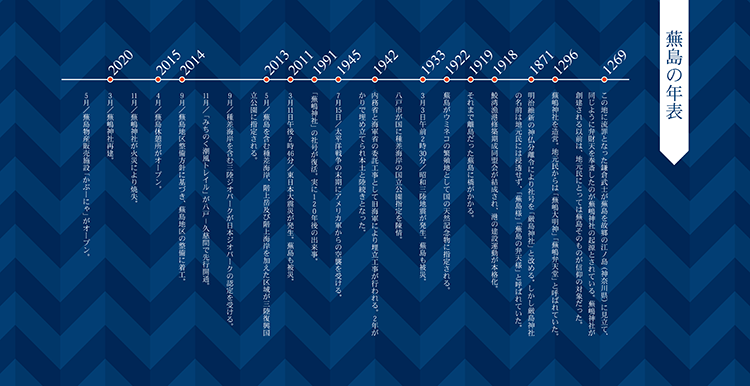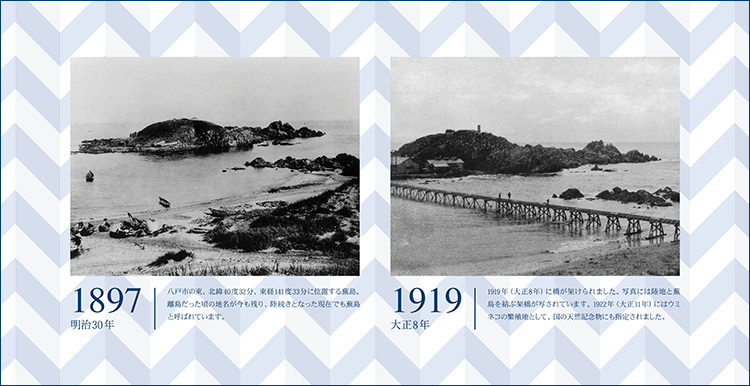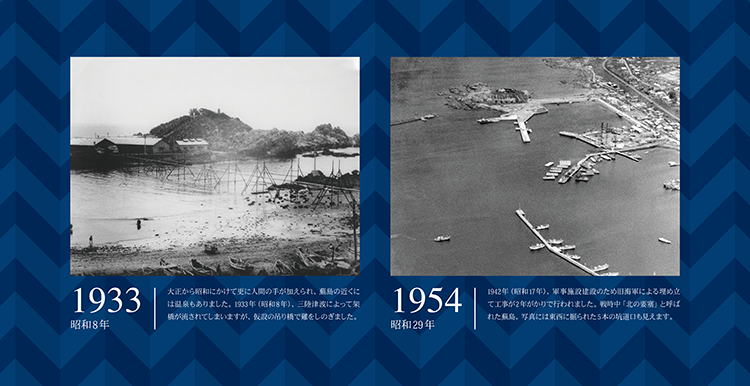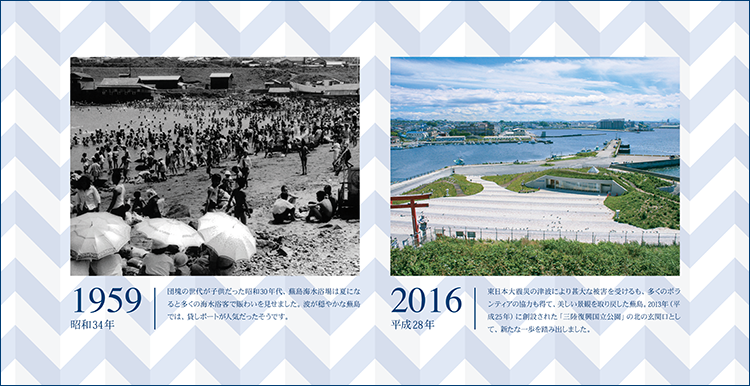History


History
The sacred island of Kabushima is located at the northern end of the Tanesashi Coast. In the past, sailors would stop here to seek shelter from storms. They also believed that the black-tailed gulls (Larus crassirostris) that frequent the island were messengers of the gods guiding them to abundant fishing grounds.
The island is home to Kabushima Jinja, a Shinto shrine built in 1269 that is dedicated to Benzaiten, the goddess of seafaring and music. It was a place where fishermen and other residents would visit to pray for prosperity. The shrine suffered damage from fires and earthquakes throughout the centuries, and was destroyed by fire in 2015. Rebuilding took five years—construction was primarily carried out during the times of year when the black-tailed gulls were absent, so as not to interrupt their nesting. It reopened in 2020.
Kabushima is perhaps best known for the flocks of black-tailed gulls that nest here. These gulls are called umineko (literally “cats of the sea”) in Japanese because of their distinct, cat-like cries. They typically migrate to Kabushima between late February and early March each year to mate, then lay their eggs from mid-April to mid-May. The eggs hatch in June, and the chicks leave the nest in mid-to-late July. Come August, the birds depart the island. The number of gulls is immense; as many as 40,000 birds inhabit the island during nesting season. Kabushima was designated a National Natural Monument in 1922 in recognition of its importance as a breeding ground.


Kabushima was originally separated from the mainland. However, a bridge was built in 1919, and in 1942 the Japanese government began land reclamation work that turned the island into the peninsula that visitors see today. Like many regions in Tohoku, Kabushima was damaged by the Great East Japan Earthquake on March 11, 2011. The subsequent tsunami destroyed many buildings on the shore, but spared Kabushima Shrine. A marker on the stairs leading up to the shrine indicates how high the water reached.

In 2013, Kabushima and the entire Tanesashi Coast became part of Sanriku Fukko National Park. The park extends south along the coast from Hachinohe City in Aomori Prefecture to Ishinomaki City in Miyagi Prefecture. That same year, the Tanesashi Coast was incorporated into Sanriku Geopark as well. Kabushima also marks the northern end of the Michinoku Coastal Trail, a walking course which opened in 2019 and extends over 1,000 kilometers along the Pacific coast.
この記事に関するお問い合わせ先
観光文化スポーツ部 観光課
〒031-8686 青森県八戸市内丸一丁目1番1号 市庁別館5階
企画グループ 電話:0178-43-9252 ファックス:0178-46-5600
施設グループ 電話:0178-43-9536 ファックス:0178-46-5600
- より良いサイトにするため、みなさまのご意見をお聞かせください
-













更新日:2021年02月15日